Shandies and radlers are finding new relevance with a younger generation of drinkers looking for flavor, refreshment, and above all else, authenticity.
By: Jerard Fagerberg
In 2006, the Jacob Leinenkugel’s Brewing Co. was looking to launch a new summer seasonal to replace Berry Weiss in its brew schedule and ended up creating their most iconic beer to date.
Summer Shandy debuted in summer 2007, and in three years, it became the brewery’s new flagship. As the weiss-and-lemonade beer started taking over tap lines and cold boxes across the country, with hundreds of breweries joining the fray in the following years: Sam Adams with Porch Rocker, Narragansett with Del’s Shandy, and even Athletic with a non-alcoholic version in Ripe Pursuit Lemon Radler. At the same time, European classics like Paulaner Grapefruit Radler made their way into the market.
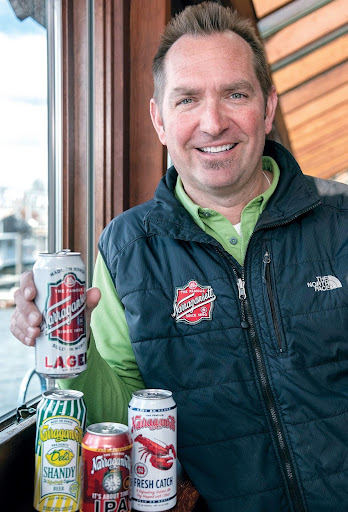
Whether it was marketed as “shandy” or “radler,” beer blended with fruit juices and sodas became the sensation of the 2010s. Industry publications dubbed almost every year that decade as the “Year of the Shandy,” lauding the novel mixes of beer and lemonade or grapefruit soda or peach juice as “the ideal thing to drink in summer.”
The hype remained until the pandemic, when shandies and radlers fell out of favor and IPA ascended. But now, as younger drinkers are demanding a full flavor experience, they’re returning to beer, and shandies and radlers are having another renaissance in 2025.
Shandy, originally known as “shandygaff,” was a Victorian invention. First conceived in the 1850s as a mix of ale and ginger beer, shandy was prized for its low ABV and extreme refreshment. Radler was created in 1922 by a German innkeeper who infamously cut the lager at his tavern with lemon-lime soda to serve exhausted cyclists, giving birth to radlermaß, or “cyclist beer.”
As both styles were exported worldwide, they began to transform. “Shandygaff” became “shandy,” and publicans traded ginger beer for sweeter options like lemonade or even orange juice. “Radlermaß” became “radler,” and tart, citrus-forward soda became the preferred mixer.
Whatever the country of origin, whatever the moniker given, shandies and radlers are built with an undeniable purpose. It’s no wonder they’re popping up again a decade after their last peak – there’s still so much left to explore.
Today, shandies and radlers are considered very much the same in the contemporary drink market. Even German-inspired breweries like Leinenkugel’s don’t adhere to strict definitions. Shandies might be sweeter, and radlers might be more effervescent, but there are no firm rules anymore. All that matters is that they’re flavorful and refreshing.
One thing that is consistent is the association with summer. These beers have, since the beginning, been highly correlated with warm-weather drinking, and that has not abated. At Cape May Brewing Company, they relish the seasonality. It’s not a limitation, but an opportunity – Cape May gets to signal the coming of every summer with shelves lined with cans of The Bog, their 4.5% cranberry wheat shandy, and The Grove, a 3.9% shandy with a blend of lemon, lime, and orange.
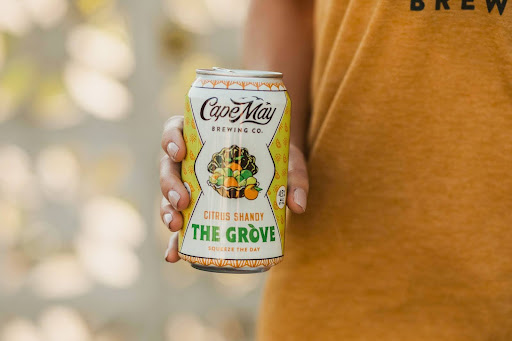
“If it were up to us, we would stretch summer out to be 12 months long,” says Scott McIntyre, Wholesale Market Manager for Cape May. “But when consumers see brands like The Bog and The Grove, that’s their indication that summer is around the corner, and it gets them amped up.”
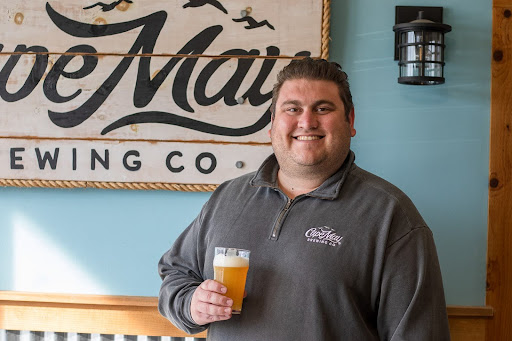
Summer is an extremely competitive time for beverage-alcohol. Drinkers have hundreds of options, and beer has to compete with seltzer, FMBs, RTDs, and other refreshers for those long-session, warm weather occasions. According to Mark Hellendrung, CEO of Narragansett Beer, drinkers come to shandies and radlers like Del’s Shandy for full-flavor, low-ABV options that hold up to that competition.
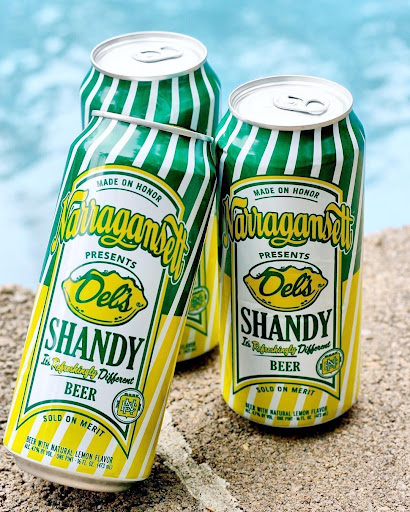
“With today’s consumer, there’s consumption across all categories,” Hellendrung says. “Drinks like White Claw, Twisted Tea, Happy Thursday, and Del’s Shandy provide those bridges between more traditional, defined categories. All those brands define flavor and refreshment and day drinking.”
‘Gansett has introduced watermelon and black cherry variants to help grow their iconic Del’s Shandy brand, but Hellendrung says they don’t plan on taking the summer seasonal year-round. It’s more important for Narragansett to stay true to the “boardwalk in a can” appeal they get from partnering with Del’s Frozen Lemonade, an iconic Rhode Island concession that only appears when the temperatures climb.
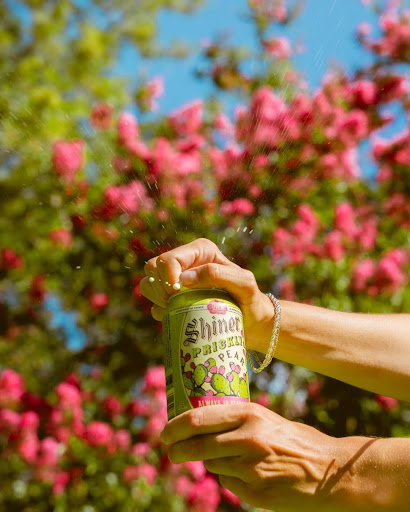
“With a brand, you’ve always got to be telling a story, and our brand is grounded in heritage,” Hellendrung says. “The way we approach the shandy itself is authentic. It really has its own persona.”
For Shiner Beers, authenticity comes in the form of innovation. Their Lemonade Shandy is sweetened with agave, and Prickly Pear makes use of cactus fruit native to South Texas. The limited Hill Country Peach Wheat Ale and Ruby Redbird are radler-inspired drinks made with locally produced fruit. This year, they’re launching a Shandy Stand Variety Pack of shandies that includes lemonade, raspberry lemonade, and mango lemonade.
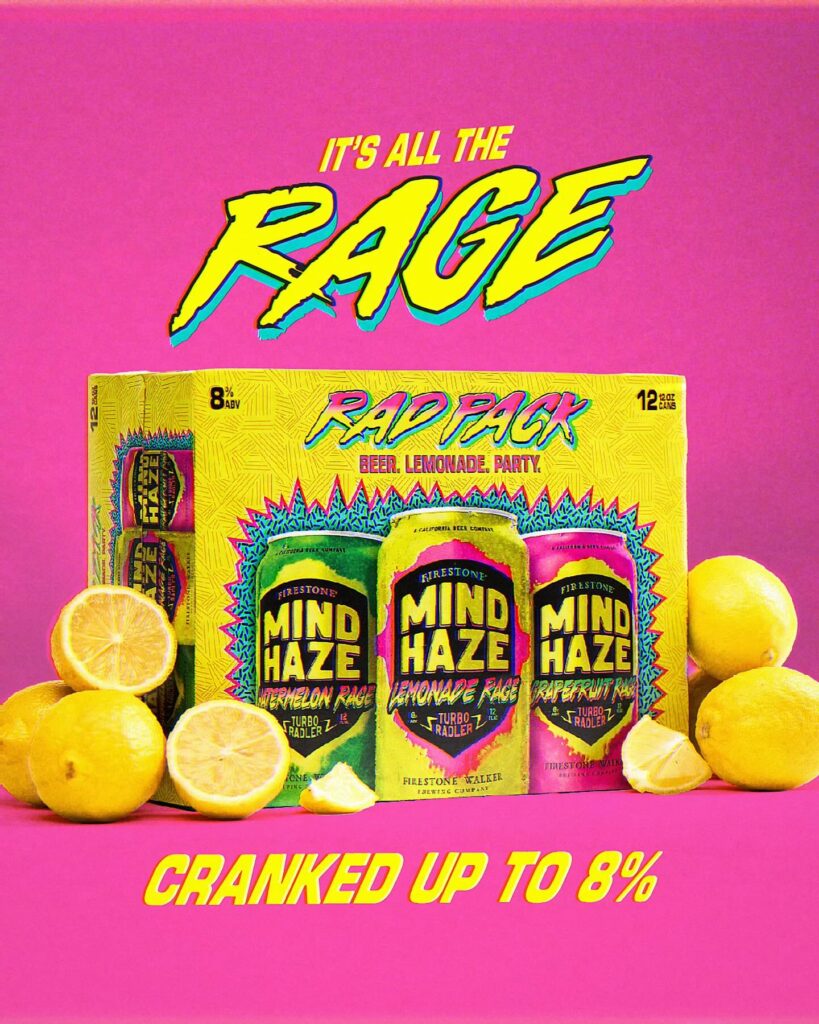
Firestone Walker is amping up the style this year with the launch of the Mind Haze Rad Pack, a variety pack of 8% shandy and radler-inspired beers packed with flavor. “Mind Haze Lemonade Rage is our way of turning up the classic shandy, blending fresh lemonade and fruit flavors with the bold, juicy punch of our classic Mind Haze beer,” explains Firestone Walker Brewmaster Matt Brynildson of the new pack, which includes Lemonade Rage, Watermelon Rage, and Grapefruit Rage flavors. “I was inspired by a perfect summer day in Europe, sipping lemonade in the sun, and wanted to bring that back to the states with a twist – at 8% ABV, this one’s got a little more bite! The whole Rage lineup is refreshingly tart and sweet with just the right kick to keep thing interesting.”
Whatever the country of origin, whatever the moniker given, shandies and radlers are built with an undeniable purpose. It’s no wonder they’re popping up again a decade after their last peak – there’s still so much left to explore.
“People have been doing this for hundreds of years, and they’re wanting it more and more,” Fiorenzi says. “We haven’t seen the end of it.”
About the Author: Jerard Fagerberg is a freelance drinks writer and product manager based in Kittery, Maine. His name is not Jared, but lotsa folks get that wrong.
